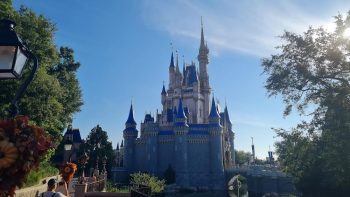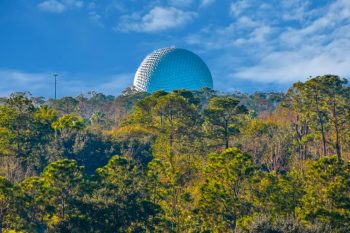
Axolotls, known for their adorable fringed gills and ability to regenerate almost any body part, have captured the hearts of animal lovers around the world. But what exactly is this fascinating creature, and which animal kingdom does it belong to? Let’s dive deep into the world of axolotls.
Axolotls belong to the Animal Kingdom, also known as Kingdom Animalia. They are a unique species of salamander (scientific name Ambystoma mexicanum) that fall under the Phylum Chordata, Class Amphibia, Order Urodela (or Caudata), and Family Ambystomatidae. They are known for retaining their larval features throughout their life, a phenomenon called neoteny.
Classification of Axolotls
Axolotls belong to the Animal Kingdom, scientifically known as Kingdom Animalia. They are classified under the Phylum Chordata, Class Amphibia, Order Urodela (or Caudata), Family Ambystomatidae, and Genus Ambystoma. The scientific name for the axolotl is Ambystoma mexicanum, making it a unique species of salamander that retains its larval features throughout life, a phenomenon known as neoteny.
The Kingdom Animalia
The Animal Kingdom is characterized by multicellularity, eukaryotic cells, heterotrophy, specialized tissues, and motility. Most animals reproduce sexually, involving the fusion of male and female gametes. Axolotls, like all animals, exhibit these characteristics. They are particularly unique among amphibians as they reach adulthood without undergoing metamorphosis, remaining aquatic and retaining their gills.
Unique Traits of Axolotls
Axolotls are not your average amphibians. They exhibit several unique traits that set them apart within the animal kingdom:
- Neoteny: Unlike other salamanders, axolotls do not undergo metamorphosis and remain aquatic throughout their lives. This means they retain their juvenile characteristics, such as external gills, into adulthood.
- Regeneration: Axolotls have an incredible ability to regenerate almost any lost body part, including limbs, organs, and parts of their brains. This makes them a fascinating subject in scientific research, particularly in the field of regenerative medicine.
- Limited habitat: Axolotls are native to only one place in the world, Lake Xochimilco in Mexico City, where they are critically endangered due to habitat destruction and the introduction of invasive fish species.
- Variety of colors: Axolotls come in a range of colors, including dark brown, black, gray, white, and pink. The wild axolotls are usually dark-colored with greenish mottling, while albino and white mutants are common in captivity.
Evolutionary History
The evolutionary history of axolotls is not entirely clear, but they are believed to have evolved relatively recently compared to other salamander species in their region. Axolotls are closely related to the tiger salamander and are native to Mexico, where they thrived along the banks of Lake Texcoco.
Distribution and Habitat
Axolotls are geographically distributed in a limited area in the southern part of Mexico City. They are native to the freshwater of Lake Xochimilco and Lake Chalco in the Valley of Mexico. Unfortunately, due to human encroachment, habitat destruction, and pollution, their natural habitat has been significantly reduced, and they are now critically endangered.
Threats and Conservation Status
Axolotls are critically endangered in the wild, with their population decreasing significantly. The main threats to axolotls include human development, pollution, loss of habitat due to droughts, invasive species, and overfishing. Conservation efforts are crucial to protect this unique species and its remarkable abilities.
Role in the Ecosystem
Axolotls play a vital role in the ecosystem by acting as top predators in their native environment. They primarily feed on mollusks, arthropods, worms, crustaceans, insect larvae, and small fish, thus helping to regulate the populations of these species.
Reproduction
Axolotls reproduce through a process called internal fertilization. The natural breeding season for axolotls is in the spring, due to the increase in water temperature and lengthening of days. They can breed multiple times, continually restarting the process after each successive mating event.
In conclusion, axolotls are fascinating creatures that belong to the Animal Kingdom. Their unique traits, such as neoteny and regeneration, make them stand out within their kingdom. Despite the threats they face, efforts are being made to conserve this remarkable species. Their fascinating biology and ecological role make them a topic of great interest in scientific research and conservation efforts.
Frequently Asked Questions
What does the term ‘neoteny’ mean?
Neoteny is a biological phenomenon where an organism retains juvenile characteristics into adulthood. In axolotls, this means they remain in their aquatic larval form throughout their lives, retaining features like external gills.
Are Axolotls good pets?
Yes, axolotls can make good pets for those who are prepared to provide the proper care. They require a specific environment, including a large tank with cool, clean water, and a diet of protein-rich foods. It’s also important to note that they are nocturnal creatures and have a long lifespan, often living up to 15 years in captivity.
How big do Axolotls get?
Axolotls can grow up to 30 cm (about 12 inches) in length, although the average size is usually between 15 to 25 cm (6 to 10 inches).
Can axolotls regenerate their entire body?
Axolotls have an incredible ability to regenerate, but it’s not limitless. They can regrow many body parts, including limbs, the heart, and parts of the brain and spinal cord. However, they cannot regenerate their entire body.
Can axolotls live out of water?
No, axolotls are fully aquatic and must remain in water. They breathe through both their lungs and their gills, but removing them from water can cause stress and potential harm.












